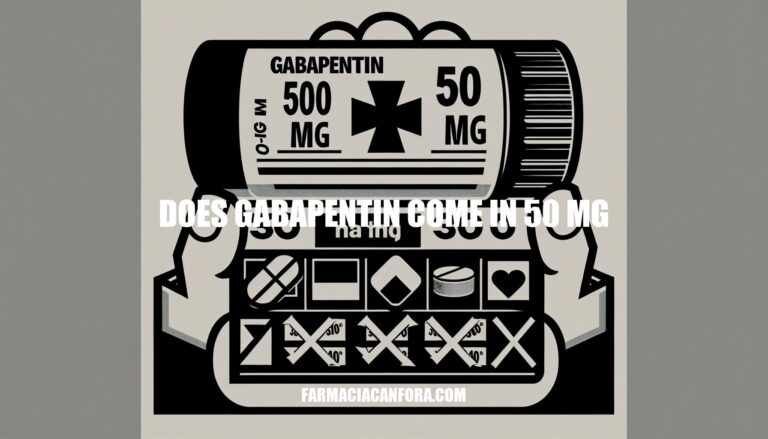Gabapentin is a medication commonly used to treat nerve pain and seizures. It is available in various forms, including capsules, tablets, and oral solutions. However, gabapentin does not come in a 50 mg dosage. The available dosages include 100 mg, 300 mg, 400 mg, 600 mg, and 800 mg. If you have specific dosage needs, it’s best to consult with your healthcare provider.
Gabapentin Dosage Forms
Gabapentin is available in several dosage forms:
- Capsules: 100 mg, 300 mg, 400 mg.
- Tablets: 100 mg, 300 mg, 400 mg, 600 mg, 800 mg.
- Extended-Release Tablets: 300 mg, 450 mg, 600 mg.
- Oral Solution: 250 mg/5 mL.
Gabapentin does not come in a 50 mg dosage.
Availability of 50 mg Gabapentin
Gabapentin is not typically available in a 50 mg dosage. The common dosage forms include:
- Capsules: 100 mg, 300 mg, 400 mg (Neurontin, generic gabapentin)
- Tablets: 300 mg, 600 mg, 800 mg (Gralise, Neurontin, generic gabapentin)
- Oral Solution: 250 mg per 5 mL (50 mg per mL) (Neurontin, generic gabapentin)
- Extended-Release Tablets: 300 mg, 600 mg (Horizant)
Brands include Neurontin, Gralise, and Horizant.
Clinical Use of 50 mg Gabapentin
A 50 mg dose of gabapentin is quite low and not commonly prescribed, but it might be used in specific scenarios such as:
- Initial Dose Titration: Starting at a low dose to minimize side effects before gradually increasing to a therapeutic dose.
- Elderly Patients: Older adults who may be more sensitive to medications and require lower starting doses.
- Patients with Renal Impairment: Adjusting the dose for those with kidney issues to prevent accumulation and toxicity.
- Pediatric Use: In children, especially those under 5 years old, where dosing is often weight-based and starts low.
Gabapentin Dosage Considerations
Gabapentin does not come in a 50 mg dosage, but it may be used in specific scenarios such as initial dose titration, elderly patients, renal impairment, and pediatric use.
Healthcare providers should consult with their patients to determine the best course of treatment.


